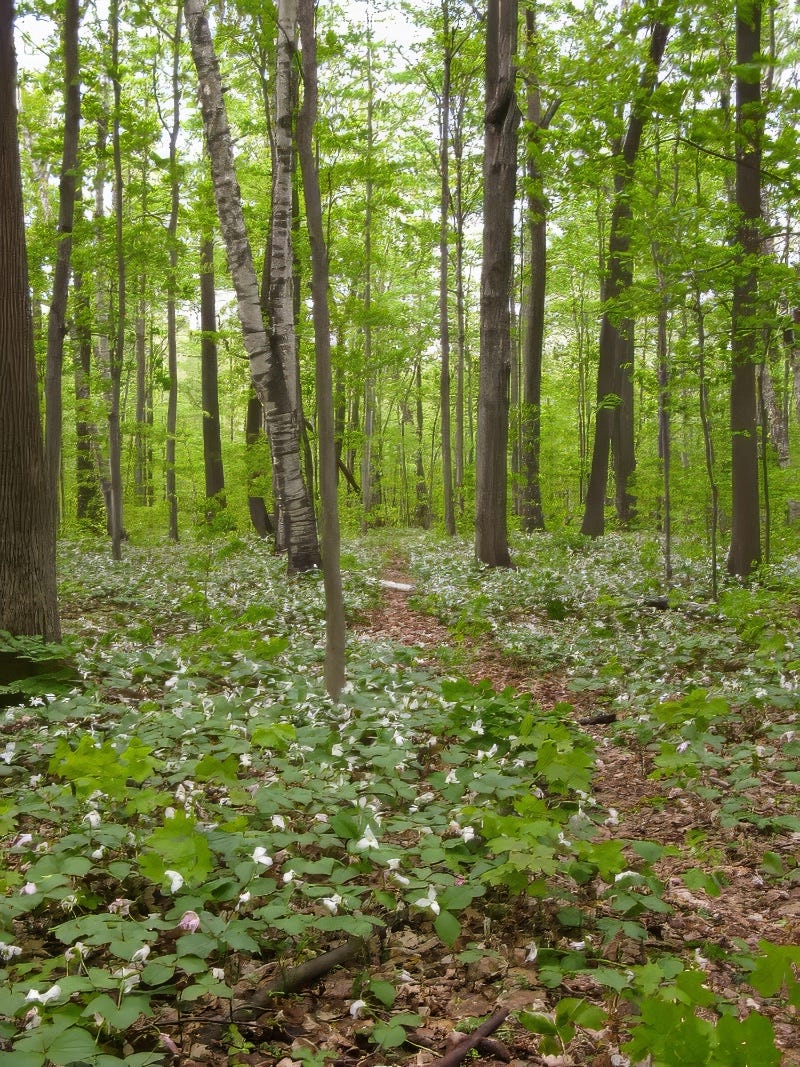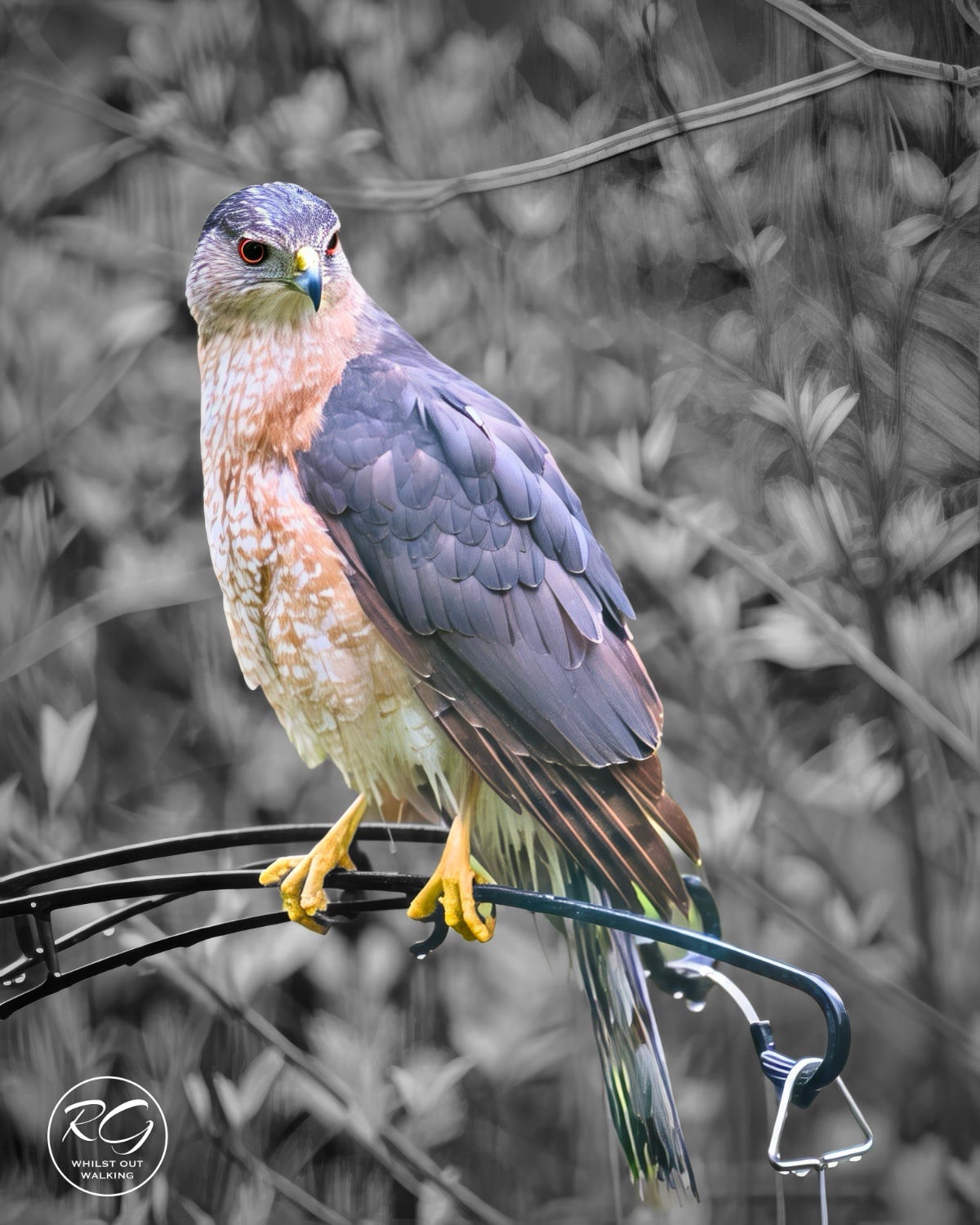A few days ago I posted some pictures of flowers in the group known as “Ephemera” and today am going to concentrate on what is perhaps the most widespread ephemeral species, the Trillium. The ephemeral flower in the very few weeks between the melting of the winter snows and the leafing out of the trees in spring which cast deep shade in the forests. They make the most of the early sunlight.
In the first week of April 1998 I had been in Canada just a few weeks. It was another weekend … time to continue my exploring before J flew in to join me. The company had provided me with a hire car, and a map in the hotel told me that there was an arboretum on the western tip of Montreal island, not too far away. Boots on I set off, found the place, bought an entrance ticket and set off to walk the trails.
The main trail in the arboretum starts by running along the top of a high bank which some thousands of years ago had been the shoreline of long lost seashore/lakeshore. At the bottom of this slope, in dappled shade as the leaves on the trees were barely breaking out of their buds, was a carpet of white flowers which called out to be investigated. Whatever these were, they were new to me.
And now we are in the same week of the year, but 27 years ahead in time.
Trilliums
There are some 50 species of Trilliums in the world, but around here there two predominant species are the white and the red species. Trillim erectum is the red flowering species, but much common are the white ones, Trillium grandiflorum.
Plants of this genus are perennial herbs growing from rhizomes. There are three large leaf-like bracts arranged in a whorl about a scape that rises directly from the rhizome. There are no true aboveground leaves but sometimes there are scale-like leaves on the underground rhizome. The bracts are photosynthetic and are sometimes called leaves. The inflorescence is a single flower with three green or reddish sepals and three petals in shades of red, purple, pink, white, yellow, or green. At the center of the flower there are six stamens and three stigmas borne on a very short style, if any.
The trilliums hereabouts are perennials, flowering for two to three weeks every spring before the leaves open on the trees. Interestingly their seeds are dispersed by ants. Each seed has a white fleshy appendage called an elaiosome which are very appealing to ants, so much so they often bore holes into the fruit instead of waiting for it to drop off on its own. The ants carry the seeds back to their nest where they eat the elaiosomes and discard the seeds. Eventually the seeds germinate in the vicinity of the ant nest.
It takes a very long time from seed production to germination and flowering. The seeds take at least two years to germinate as germination is affected by the need for trillium seeds have a dormant phase, during which they require specific conditions to break dormancy. This can include exposure to cold temperatures or the presence of certain chemicals in the soil. Once germinated it takes approximately seven to 10 years for a trillium plant to reach flowering size. They have a very slow growth rate, allowing the plant to establish a well-developed root system and build up energy reserves before producing flowers.
And … something to be aware of. Why are our birds disappearing?
Though this is not why they are disappearing








And they are not disappearing due to feral cats, which is endlessly being repeated over and over again in the media based on pathetic science involving three small colonies of cats in Maryland, totaling a grand number of 69 cats from which they extrapolated absurd numbers of bird kills. It's time for people to be more discriminating in their consumption of science as well as identifying bad science.
Official flower of my home province of Ontario.